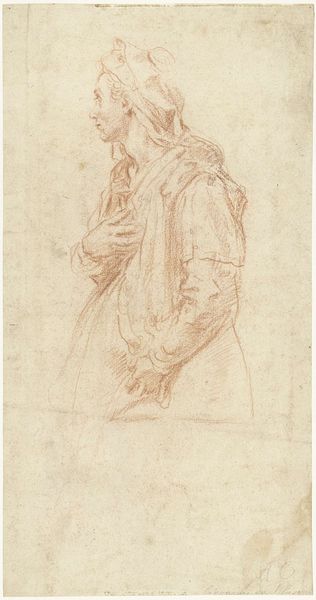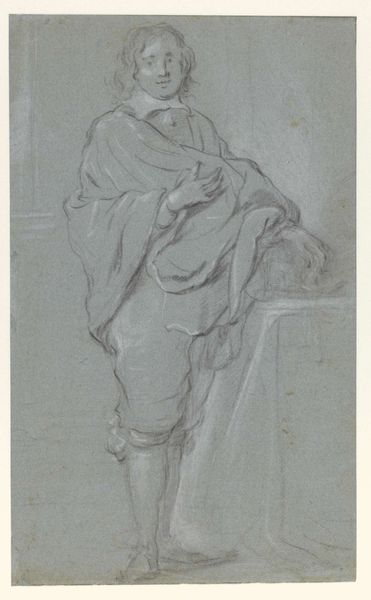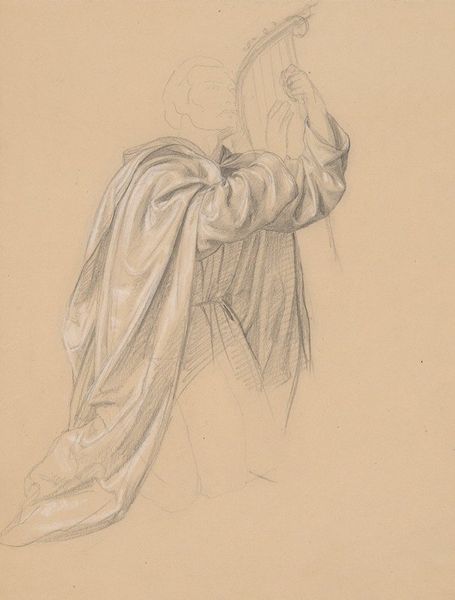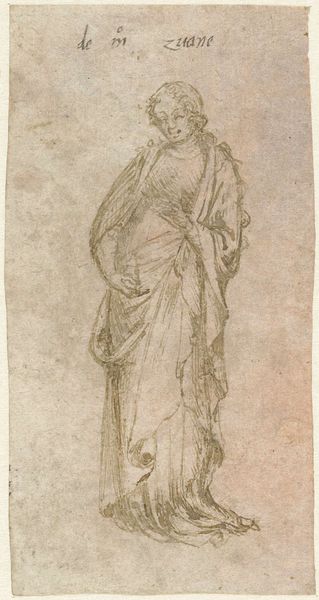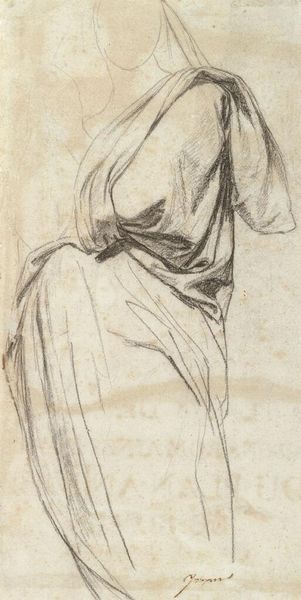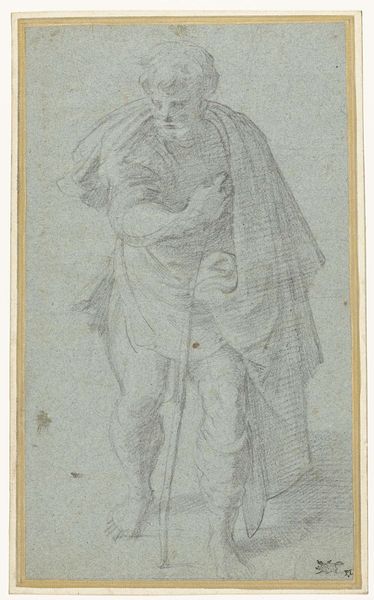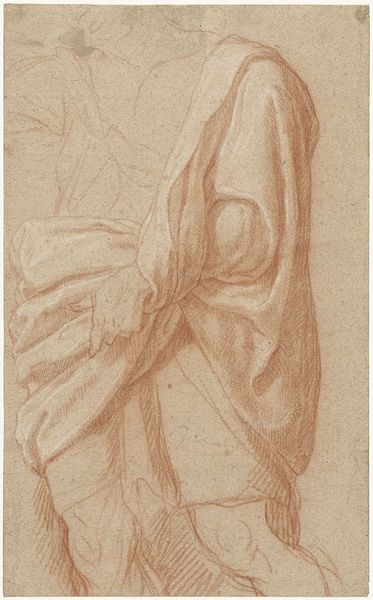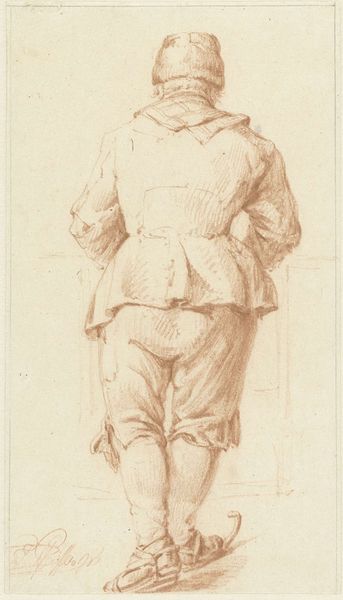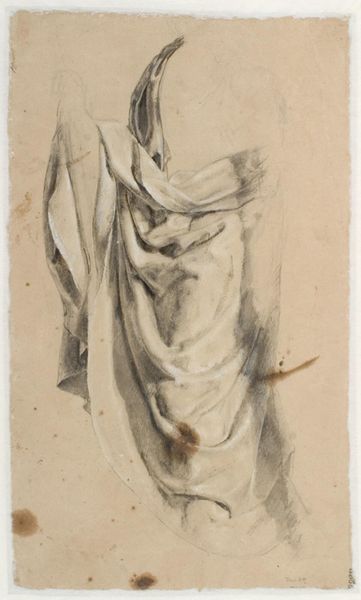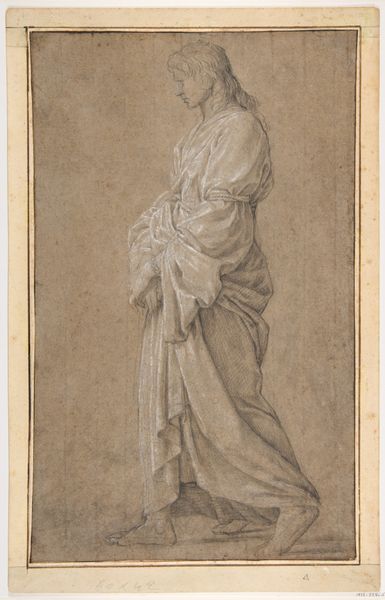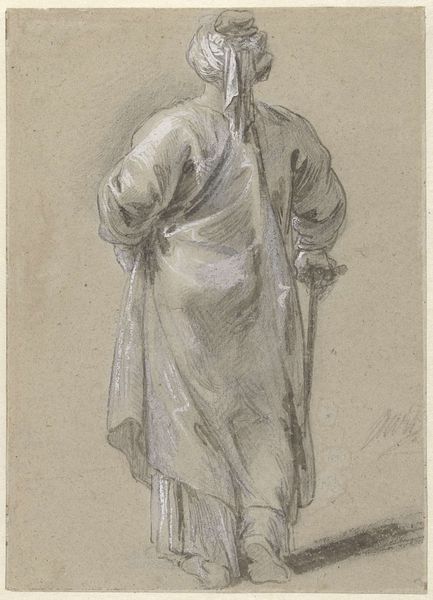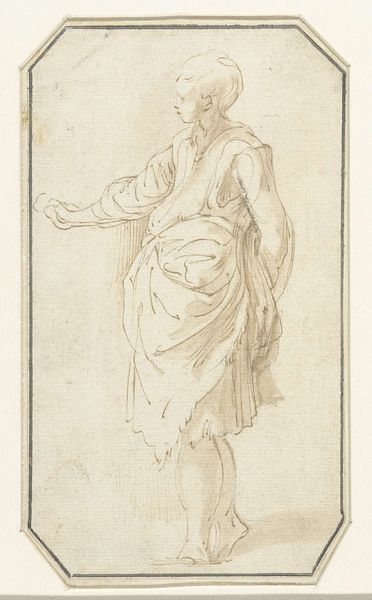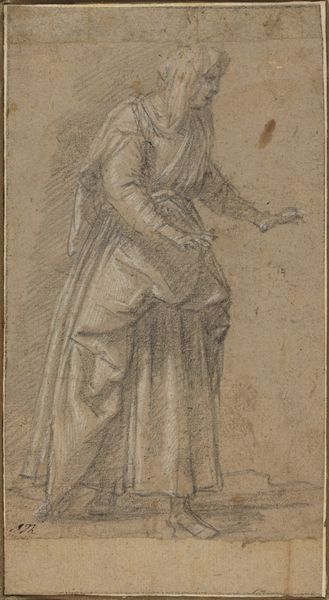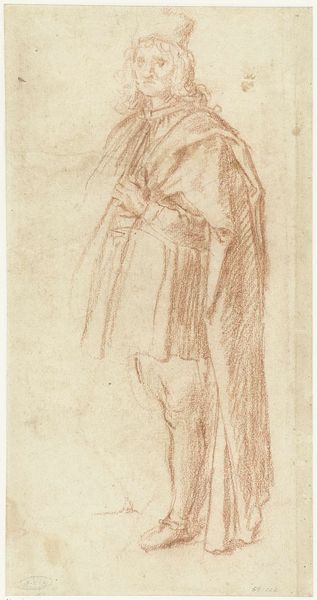
drawing, pencil
#
portrait
#
drawing
#
toned paper
#
figuration
#
11_renaissance
#
pencil drawing
#
pencil
#
history-painting
#
italian-renaissance
Dimensions: height 287 mm, width 143 mm
Copyright: Rijks Museum: Open Domain
Curator: This pencil drawing, rendered on toned paper, is titled "Standing Apostle" and attributed to Fra Paolino da Pistoia. Its estimated creation dates fall within the period of 1500 to 1547, situating it firmly within the Italian Renaissance. Editor: It's a rather subdued piece, isn't it? The limited tonal range focuses your attention. The way the drapery is handled almost feels classical, calling to mind a slightly hesitant contrapposto. Curator: Indeed. The drapery is quite telling, actually. Beyond the surface aesthetics, consider what such careful rendering communicates about power, privilege, and status in Renaissance society. These luxurious fabrics and the ability to depict them spoke volumes about artistic patronage and its relationship to the Church. Editor: Agreed, but structurally speaking, I'm most interested in the apostle’s stance and gaze. See how the slightly averted eyes combined with that subtle hand gesture creates a sort of narrative tension. It draws me in. What’s *he* thinking? What’s *he* about to do? Curator: And think, too, about how representations of male apostles historically reinforce and naturalize specific concepts of masculinity, authority, and divine law. Editor: Certainly, we can’t divorce the artwork from that history, and the apostle with his book is of course communicating that. Curator: Precisely. Moreover, in Renaissance art, the presence of apostles served as visual cues within broader cultural debates regarding religious orthodoxy and reform movements, underscoring the need to continually re-evaluate art’s social and ideological work. Editor: Looking at this work with new eyes has enriched the experience. Thinking about how Renaissance artistry, at the nexus of both devotion and privilege, gives an added intensity. Curator: And it brings to the forefront these silent witnesses from the Renaissance and allows us to confront ongoing discussions on cultural, political, and representational issues.
Comments
No comments
Be the first to comment and join the conversation on the ultimate creative platform.
